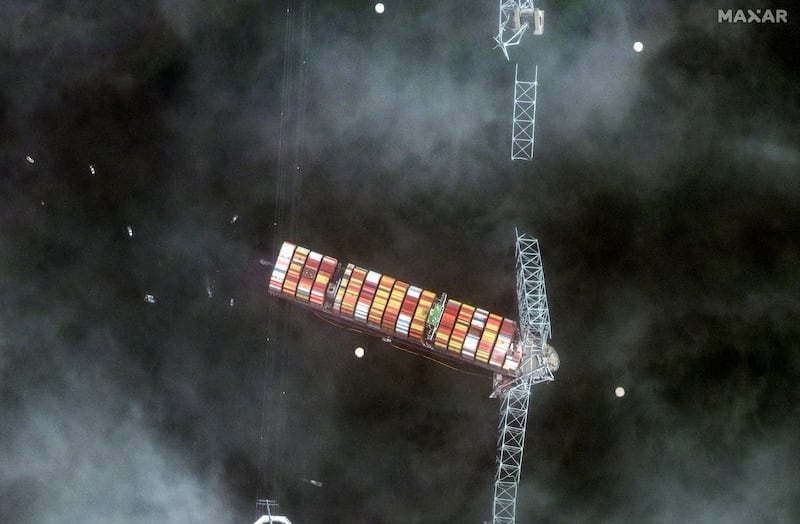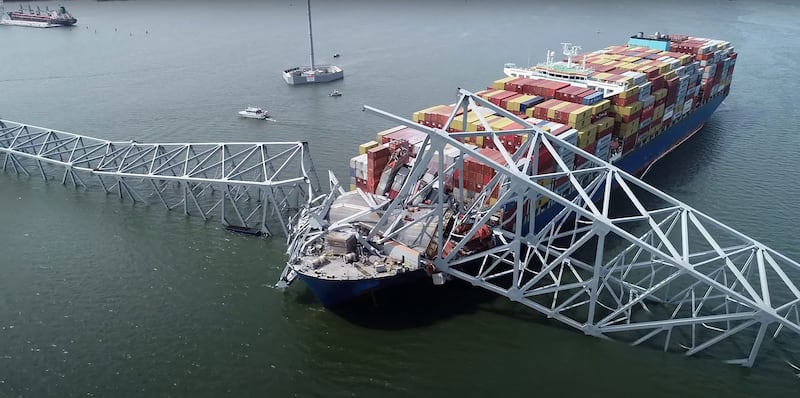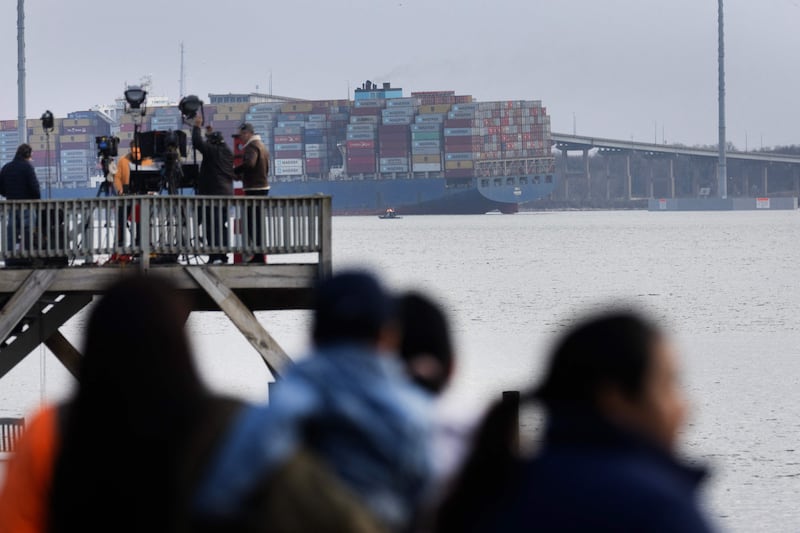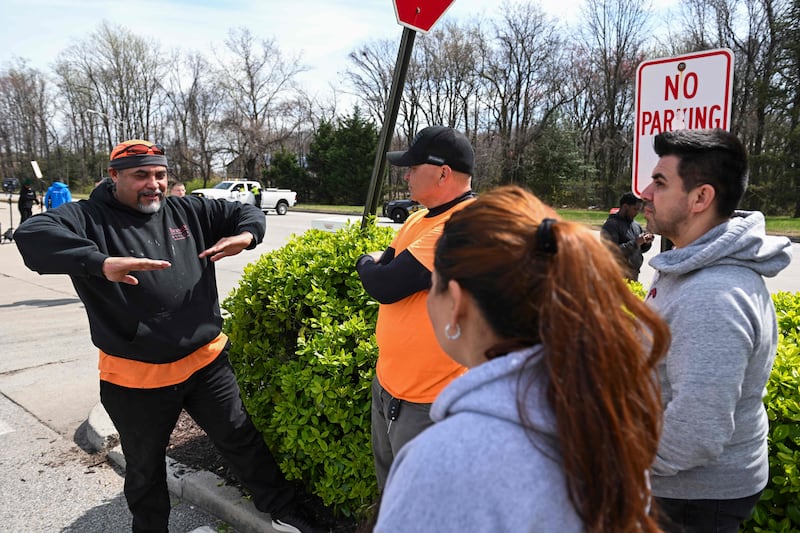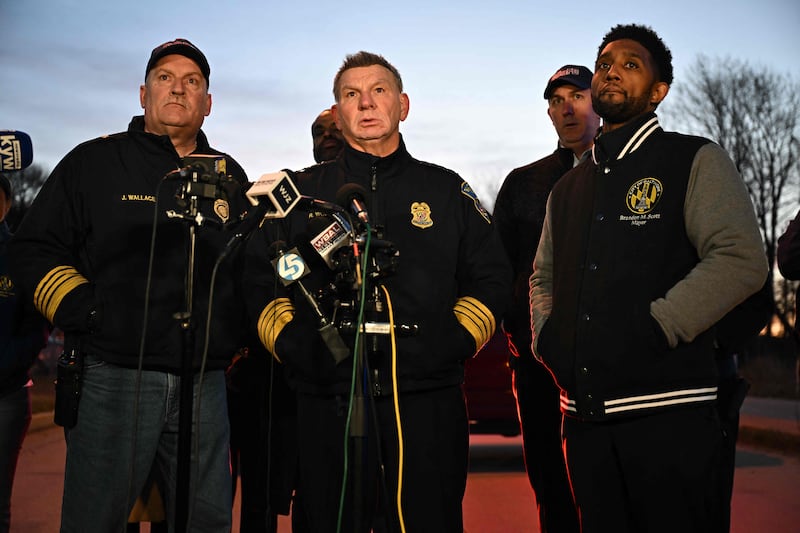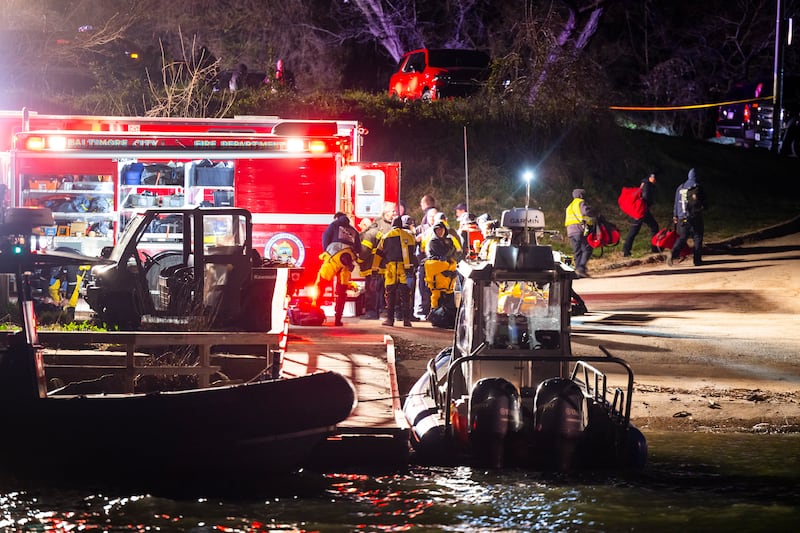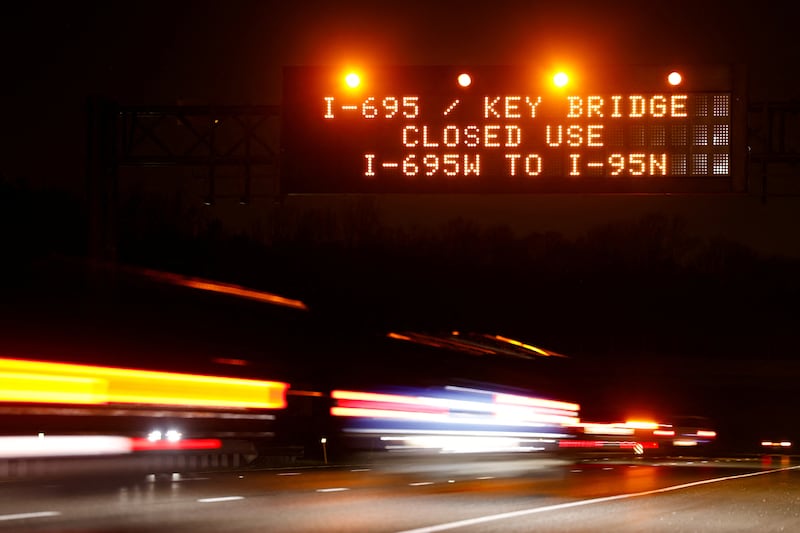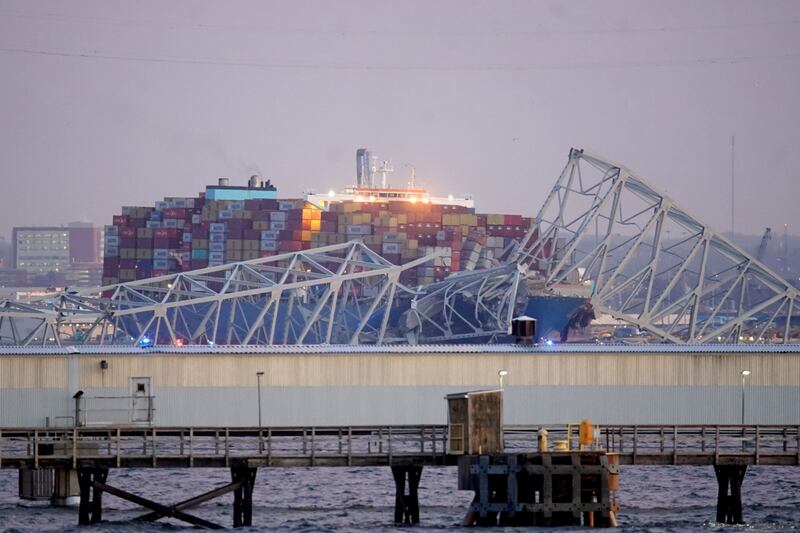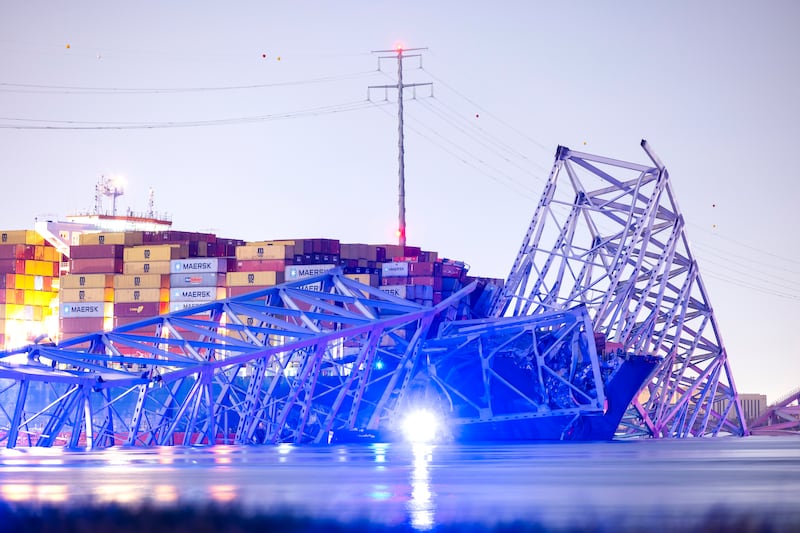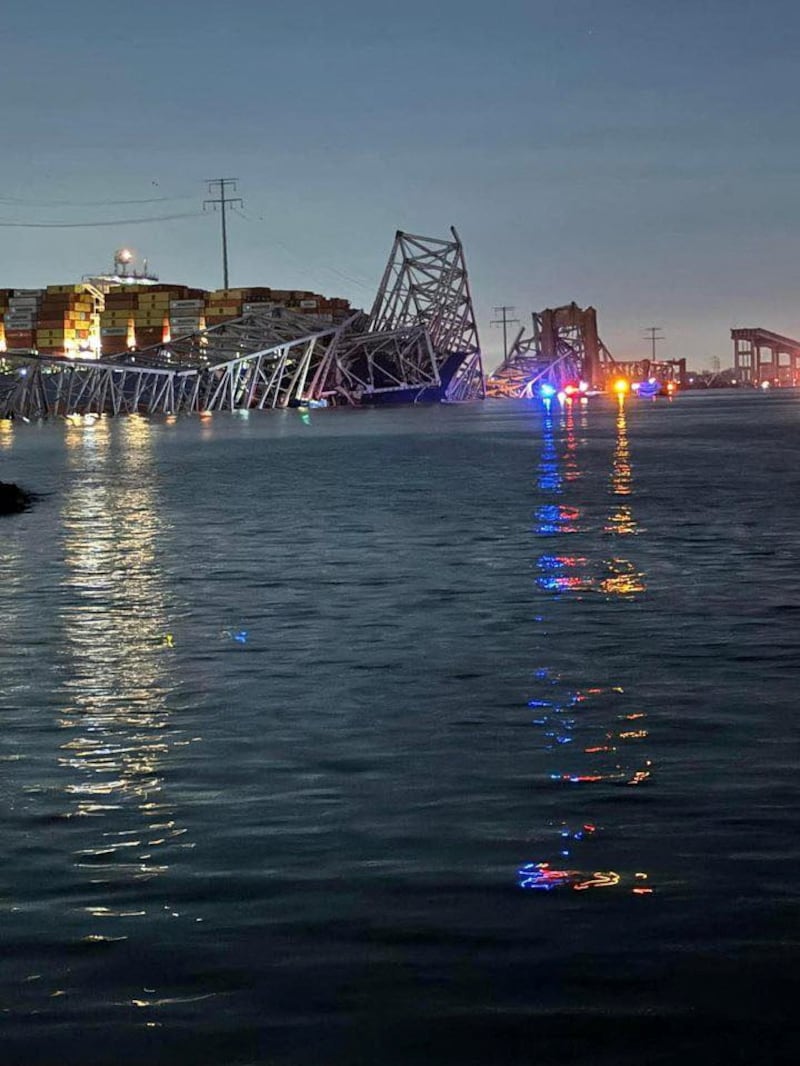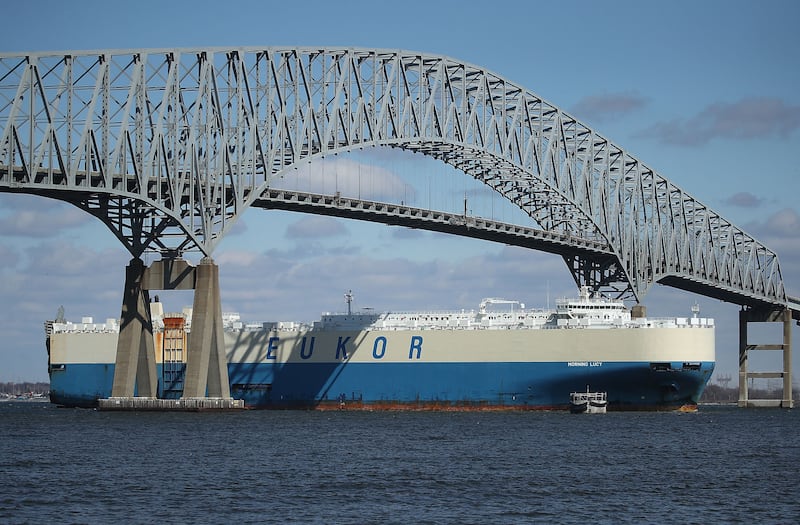The detail most residents can most clearly recall of the Francis Scott Key Bridge collapse was the noise, with the roaring sound of crumpling iron and steel heard across large parts of Baltimore, Maryland, early on Tuesday.
Julisa James, an employee at a petrol station near the bridge's western entrance said: “It sounded like a bomb going off.
Josh White, who lives next to the bridge's eastern head, said: “It sounded like rain."
“Boom!” was how Richard Majewski, who was in nearby Dundalk, described the sound.
Mr Majewski was taking a late-night walk with his dog, Buddy, when he heard what he thought was the sound of a major lorry accident.
He “never dreamt it was the bridge coming down".
On returning to his apartment building about 3km away, Mr Majewski says neighbours said they had felt a tremor from the crash.
Later, the morning news confirmed the cause of the noise he had heard.
At least seven people who were conducting maintenance on the bridge fell into the water when it collapsed. Six are unaccounted for and presumed dead.
Drone footage shows aftermath of Baltimore bridge collapse
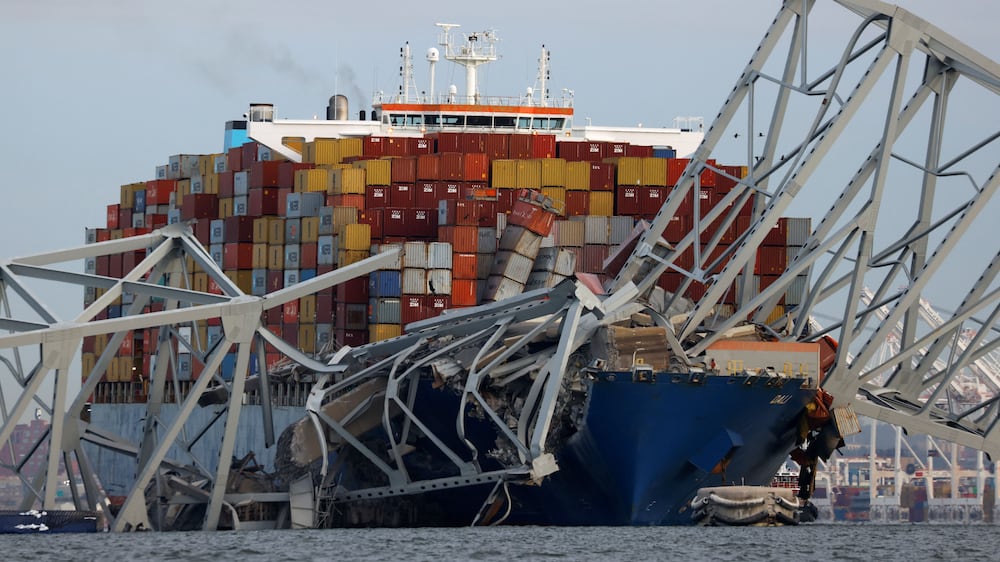
As search and rescue teams laboured around the Patapsco River, where a Sri Lanka-bound cargo ship hit and ultimately destroyed the major transit bridge, shocked Baltimore locals lined the Broening Highway overlooking the scene.
“Just the thought of not seeing that bridge, like, wow,” Mr White told The National.
“Some people don't even know another way to go.”
The collapse of the bridge has implications for “the whole east coast” of the US, locals said.
The bridge crossed over the bustling Port of Baltimore, which handled 52.3 million tonnes of foreign cargo valued at $80 billion last year. Baltimore is the busiest US port for vehicle shipments.
The booming industrial centre has provided jobs for many in Baltimore and depends on the transit artery.
More than 12.4 million commercial and passenger vehicles crossed the bridge in 2023 – about 34,000 a day – according to a state report from late last year.
“A lot of our customers work around here, use the bridge a lot, like some of them go over the bridge several times a day,” Ms James told The National inside the Royal Farms petrol station, where she works the morning shift.
"So a couple of my customers actually couldn't go to work today."
As of Tuesday afternoon, the major port was still processing lorries inside of its terminals, but Maryland Transport Secretary Paul Wiedefeld said vessel traffic in and out of the port has been suspended.
US President Joe Biden vowed that the federal government would fund the reconstruction of the bridge, but the timeline and budget remains unknown.
The effects on the traffic-heavy industrial city, north of the nation's capital, is also worrying.
“It's a huge impact … travelling is going to be like hours long," Ms James said.
"What normally would take someone a half hour across the bridge is now going to take an hour and a half."
But the Key Bridge, as its called by locals, also held significant meaning for the “Charm City”.
Scholars believe the bridge passed within about 90 metres of the site where Francis Scott Key saw the bombardment of Fort McHenry in 1814 – the battle that inspired him to write the lyrics to The Star-Spangled Banner, the US national anthem.
“The Key Bridge was just a part of my daily skyline,” Carrie Johnson, a resident of the Stoney Beach neighbourhood that overlooks the Patapsko River, told The National from outside her home.
"It wasn't unusual to be out here on our boardwalk on a weekend or a sunny spring or summer day and count the cargo ships going by and watch the cruise ships leaving.”
But on Tuesday morning, memories of those sunny scenes collapsed along with the bridge.
“All you could see was the typical outline that you're used to seeing of the bridge gone, and replaced with the haze of red and blue lights from all of the rescue efforts.”
Mr White said that for many in Baltimore's lower-income and working-class neighbourhoods, the collapse has shown that “you can't catch a break in Baltimore".
“People have been working over there in buildings and warehouses, in the ports for so long … They're raising families off taking that one route," he said.
“Pray for our city. Violence is all over the place, there's corruption … and now we lose our one bridge to help feed this city."

